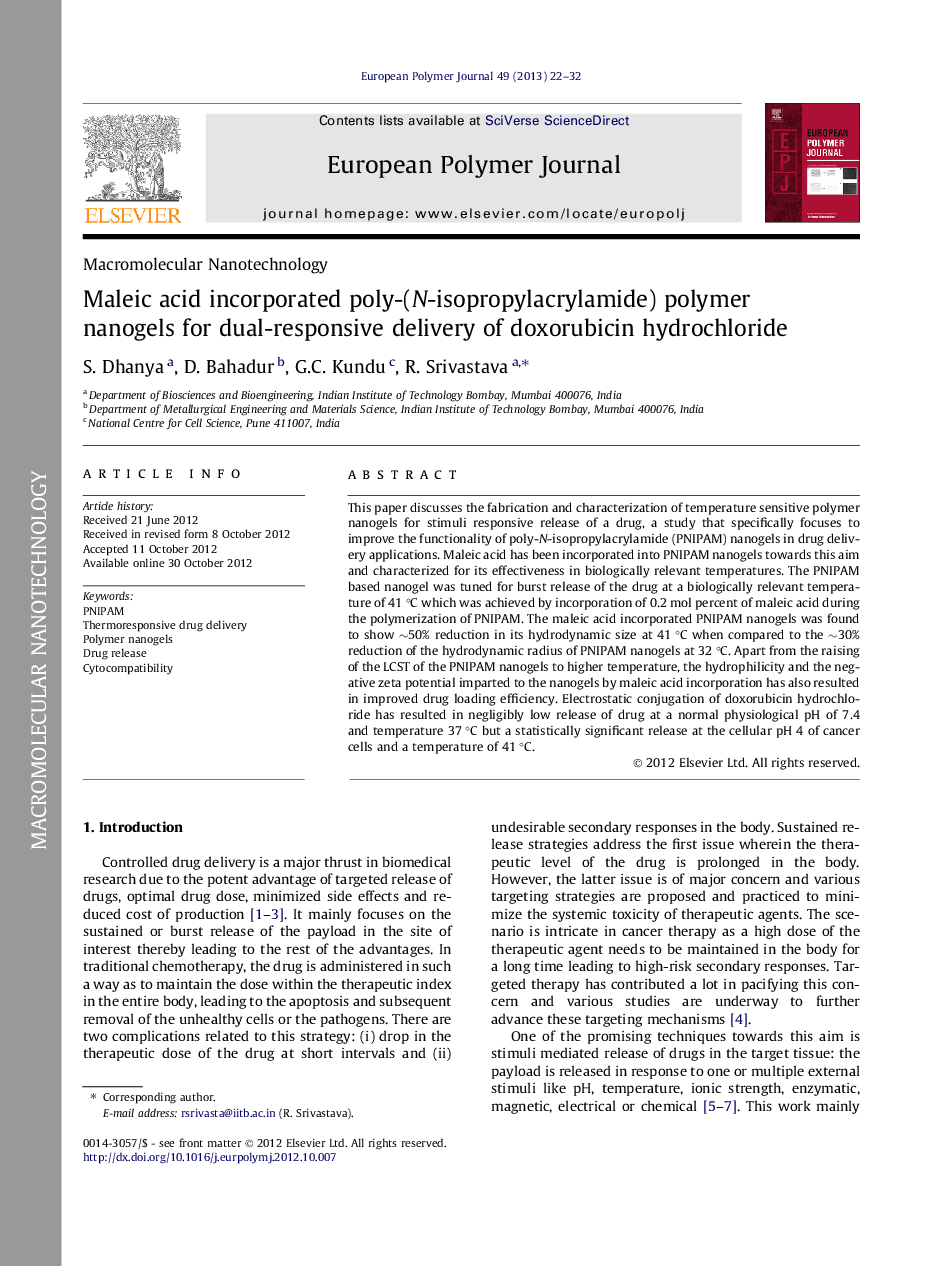| Article ID | Journal | Published Year | Pages | File Type |
|---|---|---|---|---|
| 1395872 | European Polymer Journal | 2013 | 11 Pages |
This paper discusses the fabrication and characterization of temperature sensitive polymer nanogels for stimuli responsive release of a drug, a study that specifically focuses to improve the functionality of poly-N-isopropylacrylamide (PNIPAM) nanogels in drug delivery applications. Maleic acid has been incorporated into PNIPAM nanogels towards this aim and characterized for its effectiveness in biologically relevant temperatures. The PNIPAM based nanogel was tuned for burst release of the drug at a biologically relevant temperature of 41 °C which was achieved by incorporation of 0.2 mol percent of maleic acid during the polymerization of PNIPAM. The maleic acid incorporated PNIPAM nanogels was found to show ∼50% reduction in its hydrodynamic size at 41 °C when compared to the ∼30% reduction of the hydrodynamic radius of PNIPAM nanogels at 32 °C. Apart from the raising of the LCST of the PNIPAM nanogels to higher temperature, the hydrophilicity and the negative zeta potential imparted to the nanogels by maleic acid incorporation has also resulted in improved drug loading efficiency. Electrostatic conjugation of doxorubicin hydrochloride has resulted in negligibly low release of drug at a normal physiological pH of 7.4 and temperature 37 °C but a statistically significant release at the cellular pH 4 of cancer cells and a temperature of 41 °C.
Graphical abstractFigure optionsDownload full-size imageDownload as PowerPoint slideHighlights► LCST of PNIPAM nanogels were raised to 41 °C by incorporating maleic acid during polymerization. ► The thermal behavior of the nanogels was found to be appropriate for dual responsive applications. ► Maleic acid imparts pH responsive property and high loading efficiency to the nanogels. ► The anticancer drug was negligibly released at a physiological temperature of 37 °C and pH 7.4. ► Significant release of drug was found at 41 °C and a pH 4 which mimics local environment at cancer site.
